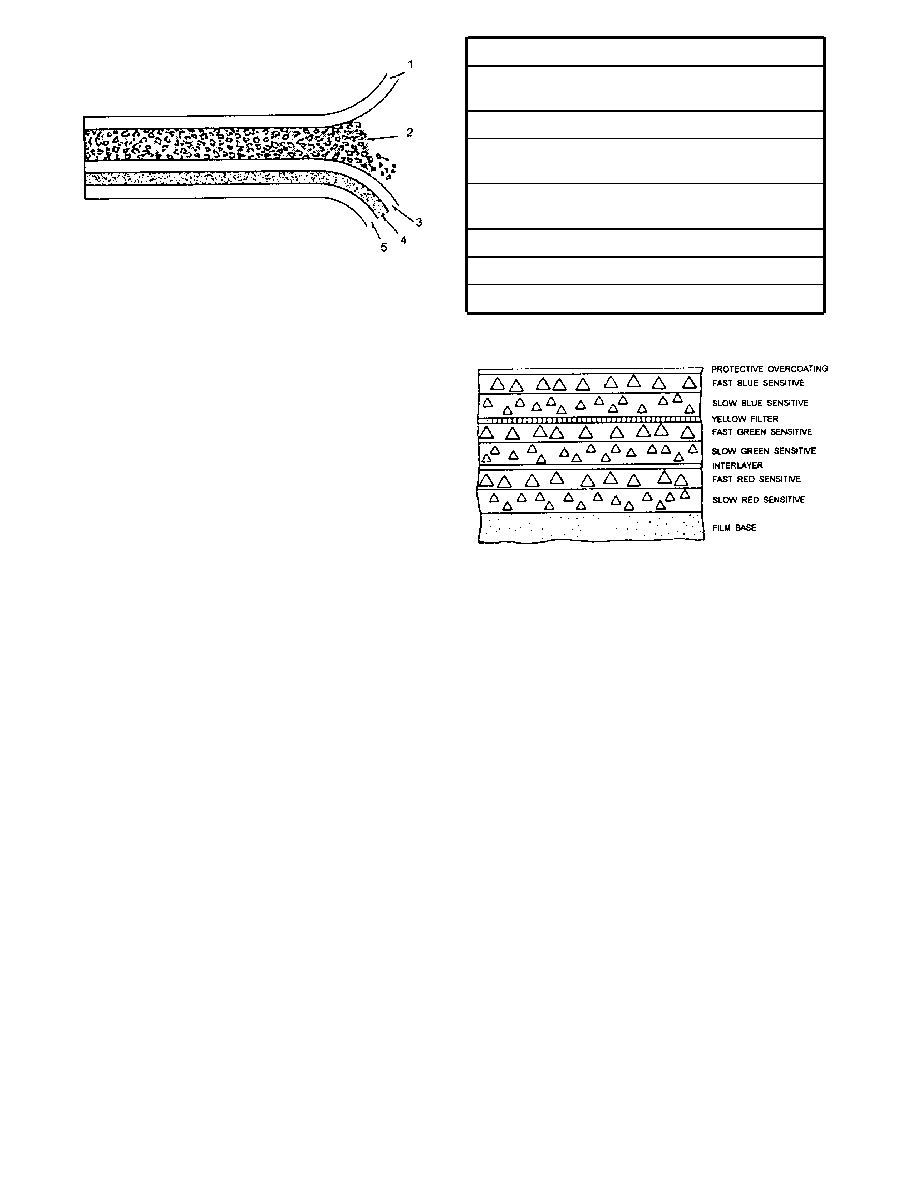
DOFMaster
for Windows
On-line
Depth of Field
Calculator
DOFMaster for Mobile Devices
On-line
Depth of Field
Table
Hyperfocal
Distance Chart
Articles
FAQ
Recommended
Books
Support
Contact
Links
Home
for Windows
On-line
Depth of Field
Calculator
DOFMaster for Mobile Devices
On-line
Depth of Field
Table
Hyperfocal
Distance Chart
Articles
FAQ
Recommended
Books
Support
Contact
Links
Home
As an Amazon Associate I earn from qualifying purchases.
![]()
This is because the high-density area tends to "bleed"
onto the low-density area due to the scattering or
diffusing of light in the emulsion during exposure.
BLACK-AND-WHITE FILM
light-sensitive portion that records the image. The base
negative materials have additional layers that perform a
special purpose. They are as follows: overcoating,
antihalation backing, and noncurl coating (fig. 2-2). The
purpose of the five parts of photographic film are as
follows:
ment. The overcoating is a clear, gelatin layer that is
sometimes called the antiabrasion layer.
opaque, depending upon how the recorded image is to
be used. The base is generally made of a cellulose
acetate.
the emulsion. The antihalation dye is sometimes
incorporated in the anticurl backing. The dye used to
eliminate halation is a color to which the emulsion is
least sensitive. This dye is water soluble and is com-
pletely dissolved during processing.
emulsion swells when wet and shrinks when dry. This
contraction produces a strain on a film base because it
is highly flexible. The noncurl coating prevents the film
from curling during the drying process.
separate emulsions on a single film base. Each of the
three emulsion layers records one of the three additive
primary colors-red, green, or blue. The top emulsion
layer is sensitive to blue light and produces yellow dyes.
Between the top emulsion layer and the middle emulsion
layer is a yellow filter (fig. 2-3). The yellow filter
absorbs the blue light that would otherwise affect the
middle and bottom emulsion layers. During processing,
this yellow filter is dissolved. The middle emulsion layer
records green light and produces magenta dyes. The
bottom emulsion records red light and produces cyan
dyes. Many of the modern high-speed color films have
fast and slow emulsion layers for each primary color
Basic Photography Course

As an Amazon Associate I earn from qualifying purchases.
WWW.DOFMASTER.COM
© 2006 Don Fleming. All rights reserved.
© 2006 Don Fleming. All rights reserved.